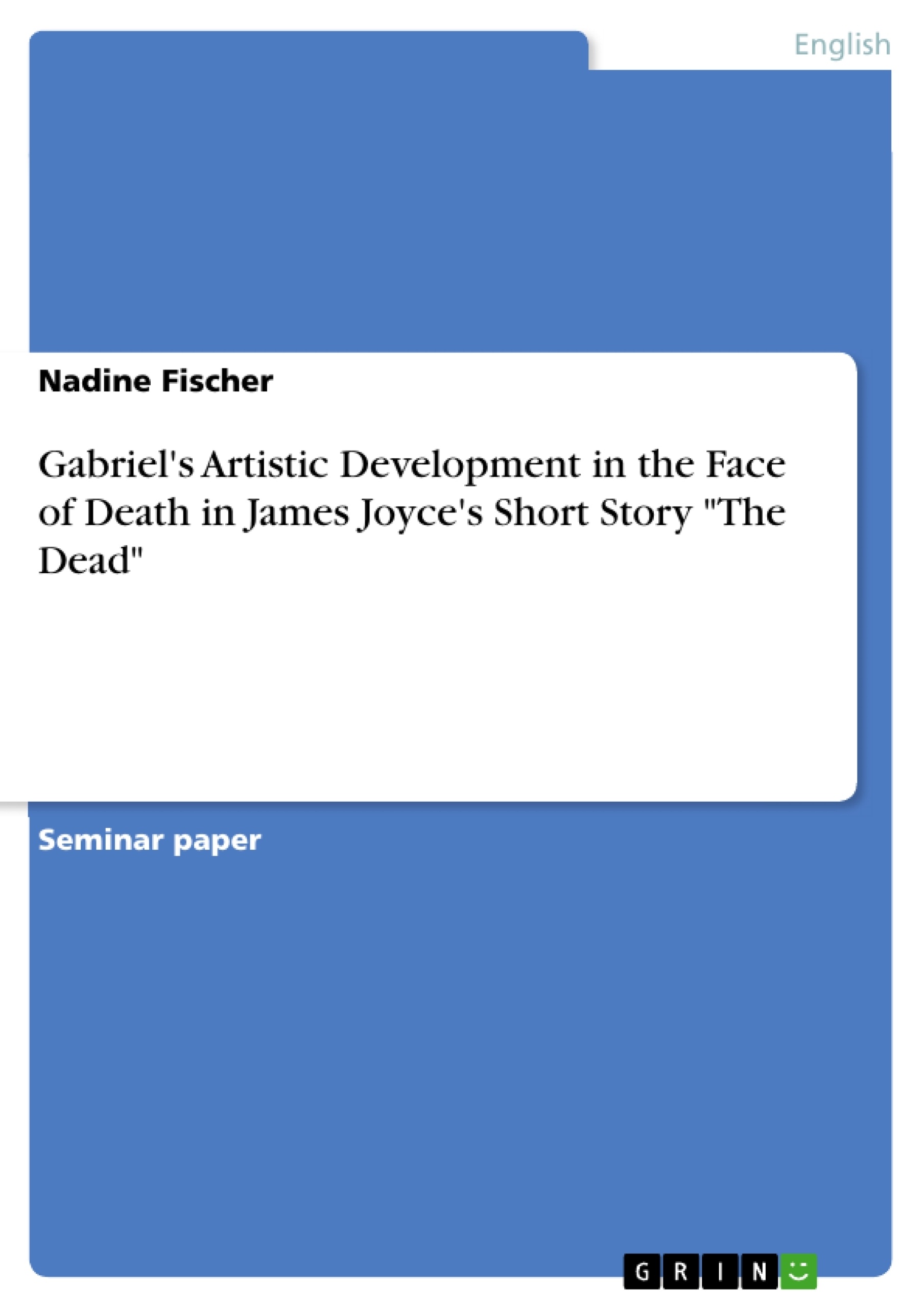Reading essays on James Joyce’s short story "The Dead", one is immediately confronted with the most different interpretations of its end as it is very different from the rest of the text and can even be seen as poetic. Apparently Gabriel’s epiphany is of prime importance to the readers of James Joyce. This term paper shall answer the question why this is the case. Therefore it is necessary to comprehend the extreme development of Gabriel within the story. This work claims that Gabriel, rather self-centred at the beginning, develops into an understanding artist towards the end of the story when he is somehow challenged by the dead after his wife’s revelation.
As the title of the short story already reveals, death plays a huge role in the text, especially when causing Gabriel’s final enlightenment. To prove this thesis, first of all allusions to death in the text shall be found and interpreted as they function as framework for the gloomy core revealed at the end and thereby pave the way to Gabriel’s aesthetic development. Then the main character shall be examined on his artistic premises before the turning point signifies a change in his aesthetic views. In the last chapter Gabriel’s transformation into an artist shall be elucidated more precisely with an emphasis put on his changing reception of the omnipresent snow transferring into a poetical symbol of death. The snow motive connects art and death and therefore anticipates the aesthetic transformation in the views of the main character towards the much discussed end of the short story.
Table of Contents
- INTRODUCTION.
- ALLUSIONS TO DEATH..
- GABRIEL BEFORE BECOMING AN ARTIST...
- THE TURNING POINT.
- THE ULTIMATE INSIGHT
- CONCLUSION
Objectives and Key Themes
This essay explores the development of Gabriel Conroy as an artist in James Joyce's short story "The Dead." It examines how Gabriel's epiphany at the story's end is shaped by the pervasive theme of death and his gradual understanding of its significance.
- The role of death as a recurring motif in "The Dead."
- Gabriel's initial artistic views and his journey towards self-awareness.
- The impact of Gretta's revelation on Gabriel's perception of death.
- The symbolism of snow and its connection to Gabriel's aesthetic transformation.
- The importance of paying close attention to textual details and subtle emotional nuances in Joyce's work.
Chapter Summaries
- Introduction: This chapter establishes the context of the essay, highlighting the different interpretations of "The Dead's" ending and the importance of understanding Gabriel's development throughout the story.
- Allusions to Death: This chapter analyzes the various references to death in the text, including the title, characters, and setting. It demonstrates how death functions as a constant presence, influencing the story's themes and atmosphere.
- Gabriel Before Becoming an Artist: This chapter examines Gabriel's initial artistic perspectives and his self-centeredness before the turning point in his understanding.
- The Turning Point: This chapter explores the pivotal moment in the story where Gabriel undergoes a significant shift in his aesthetic views, triggered by Gretta's revelation about her past love.
Keywords
The central keywords and focus topics of this essay are: "The Dead," James Joyce, Gabriel Conroy, death, artistic development, epiphany, symbolism, snow, poetic qualities, textual analysis, emotional nuance, and lyrical poetry.
- Quote paper
- Nadine Fischer (Author), 2017, Gabriel's Artistic Development in the Face of Death in James Joyce's Short Story "The Dead", Munich, GRIN Verlag, https://www.grin.com/document/358959



